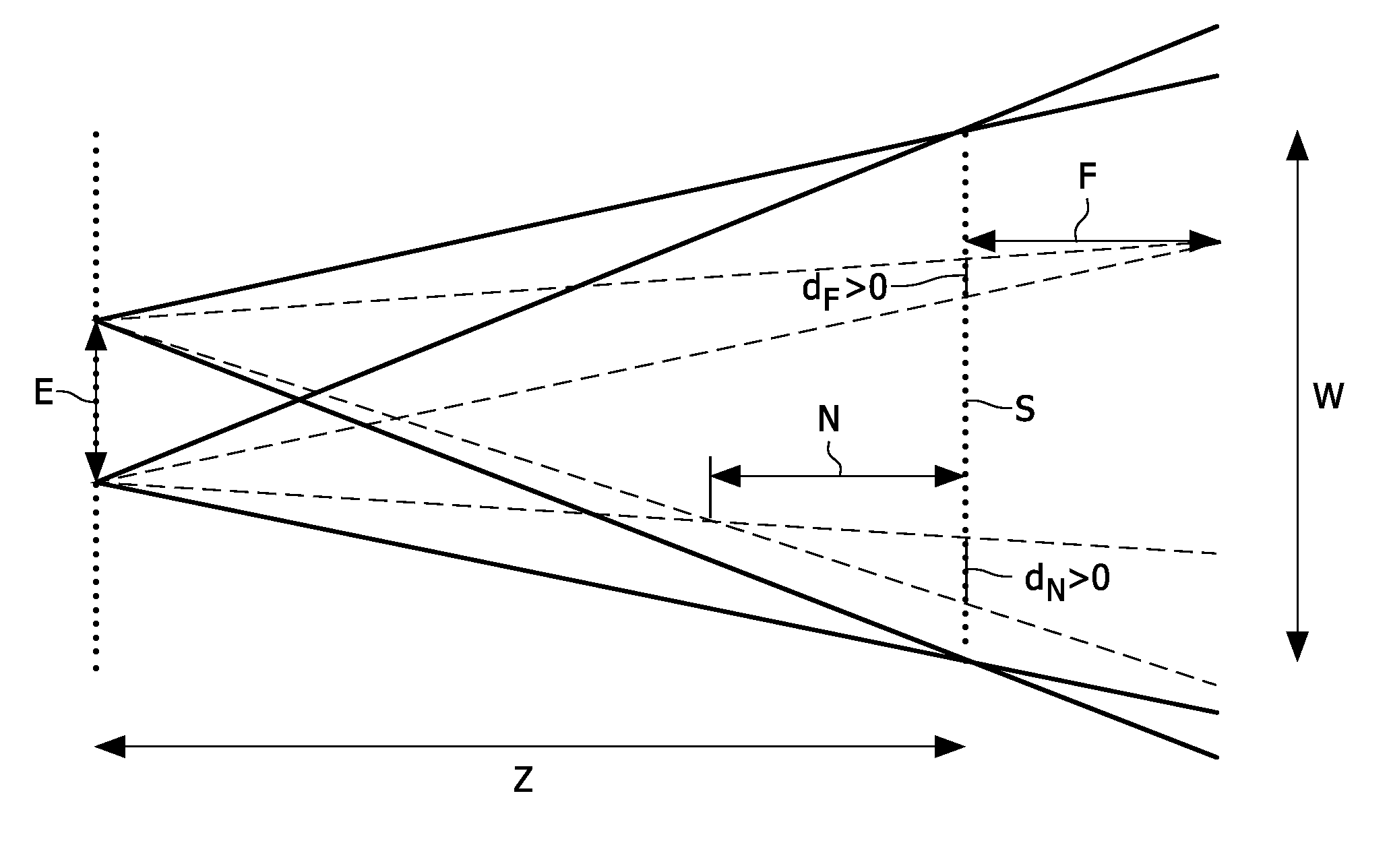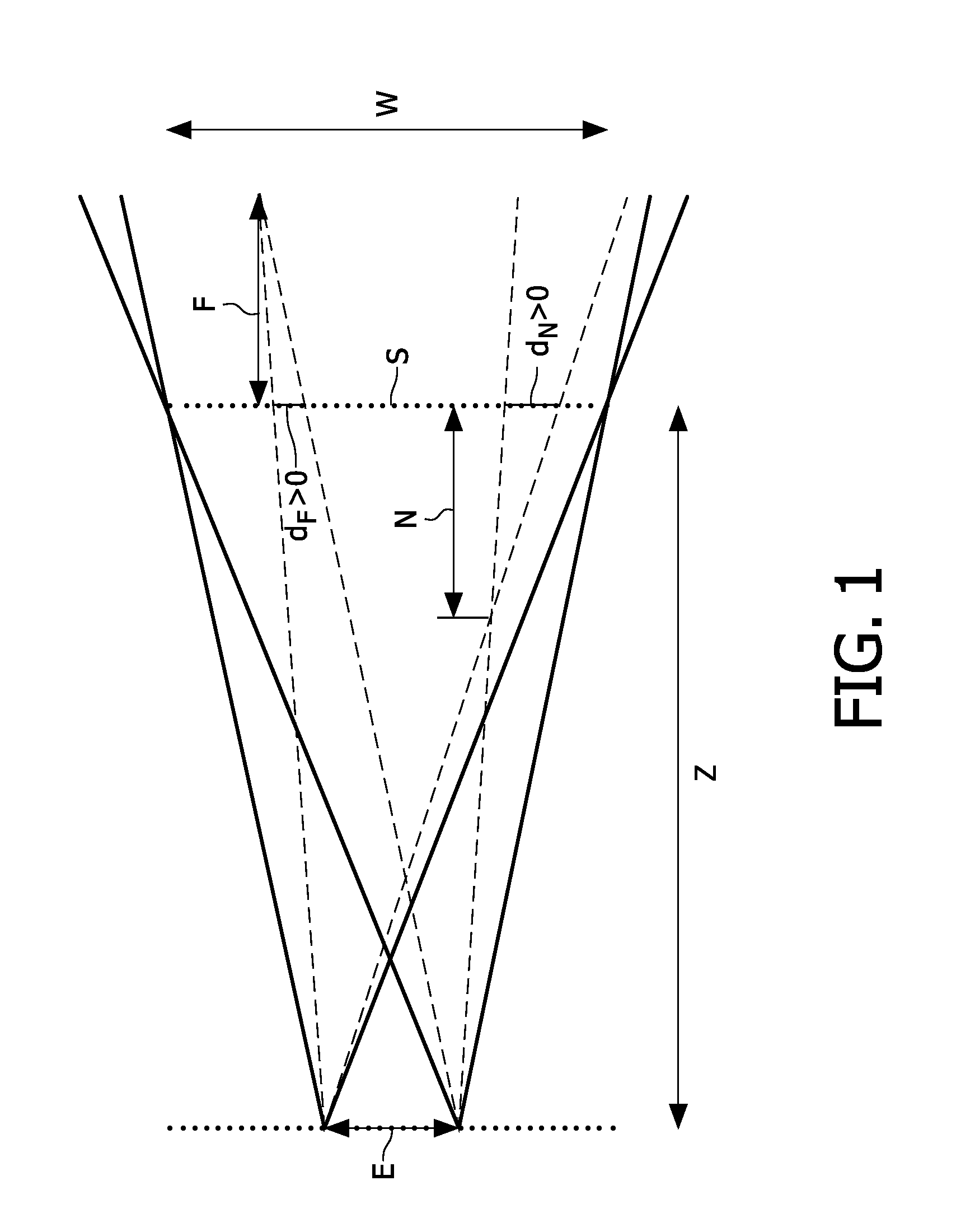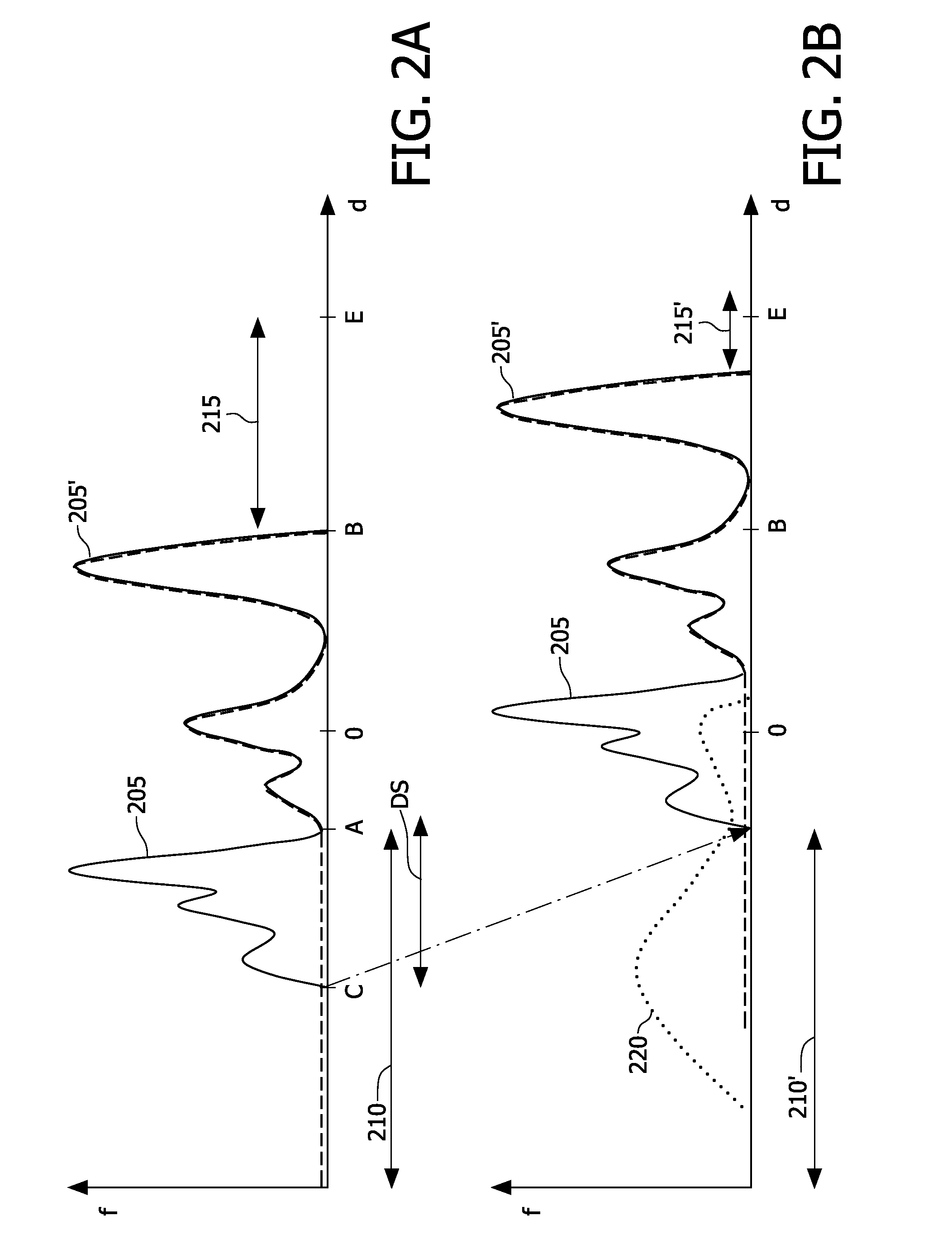Method and system for processing an input three dimensional video signal
a three-dimensional video and input technology, applied in the field of methods and systems for processing three-dimensional video signals, to achieve the effect of reducing disadvantages
- Summary
- Abstract
- Description
- Claims
- Application Information
AI Technical Summary
Benefits of technology
Problems solved by technology
Method used
Image
Examples
Embodiment Construction
[0035]FIG. 1 illustrates several general concepts and parameters defining disparity. FIG. 1 shows two viewpoints located at the edges of the double arrow E, spaced apart by eye-distance E. At a viewing distance Z, a screen S, represented by a dotted line, is located which is used for displaying three dimensional information. Such a screen in practice may be e.g. a time or spectrum sequential display that alternatively provides an eye of an observer wearing appropriate eye-wear with appropriate image information for the respective view point. The screen S here is placed at zero disparity, and W indicates the width of the screen. N (near) represents the maximum perceived depth in front of the screen S. Likewise F (far) represents the maximum perceived depth behind the screen S. The line dN represents the perceived disparity of an object located at N in front of the screen S, the disparity value dN here is negative, also referred to as crossed disparity and can be expressed as:
dN=N E / (...
PUM
 Login to View More
Login to View More Abstract
Description
Claims
Application Information
 Login to View More
Login to View More - Generate Ideas
- Intellectual Property
- Life Sciences
- Materials
- Tech Scout
- Unparalleled Data Quality
- Higher Quality Content
- 60% Fewer Hallucinations
Browse by: Latest US Patents, China's latest patents, Technical Efficacy Thesaurus, Application Domain, Technology Topic, Popular Technical Reports.
© 2025 PatSnap. All rights reserved.Legal|Privacy policy|Modern Slavery Act Transparency Statement|Sitemap|About US| Contact US: help@patsnap.com



